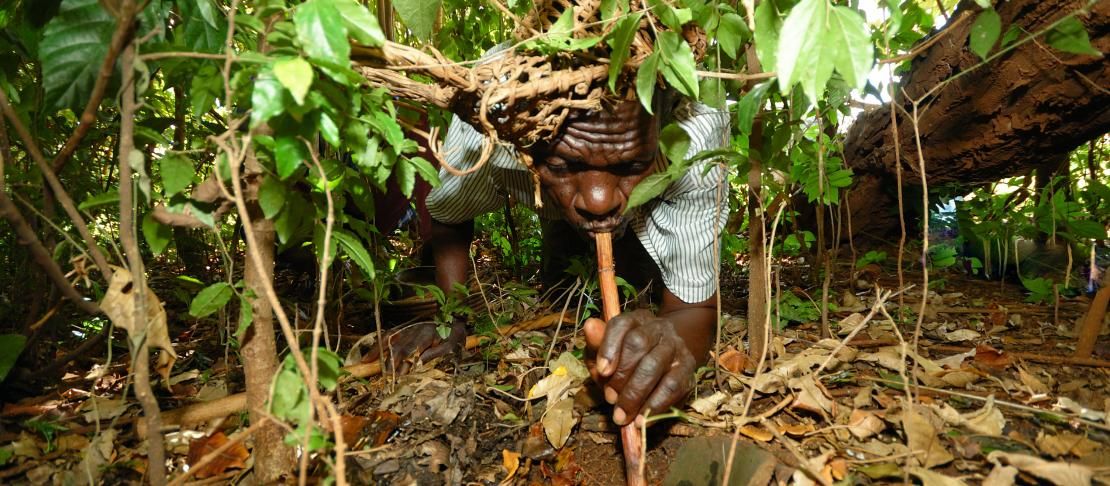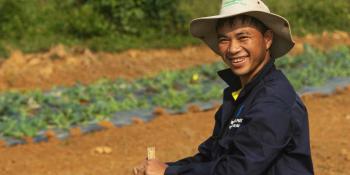Time for an exit strategy to traditional climate forecasting?

The value attached to traditional climate forecasting appears to be on the decline thanks to climate variability. Study calls for remedial action to prevent irreversible loss of intangible cultural heritage.
The acceptability of experts in traditional biotic climate forecasting is declining, a recent study has shown. This has been attributed to numerous faulty climate forecasts. Additionally, the comparative assessment between traditional biotic climate forecasts and instrumental records result showed considerable mismatch.
The study was conducted by scientists from Managing Risks for Improved Livelihoods in Ethiopia through support of the CGIAR Research Program on Climate Change, Agriculture and Food Security (CCAFS). The study site was Borana plateau (Yabello and Arero districts) – a CCAFS learning site in Ethiopia, largely dominated by semi-arid climate with a bi-modal rainfall regime ranging on average from 400 mm in the South to 600 mm in the North annually. The main economic activities of the area are animal husbandry and crop production.
The researchers found the trust and social acceptance of the traditional forecasters further deteriorated due to expansion of modern education and monolithic religions in ways prejudicial to indigenous practices with ritual element in them. The tradition of secrecy has confined knowledge in traditional climate forecast among very few men whose number is decreasing. This has precluded the possibility of documenting and verifying the epistemological foundations of traditional climate forecasting.
The acceptance of indigenous climate forecasting could further dwindle in the future since, due to accelerated climate change and variability, plants and animals vital for climate forecast are either facing extinction or changing their usual behavior. In addition to this, influenced by modern education and weary of faulty forecasting, people could reduce indigenous wisdom to superstition.
View presentation below:Indigenous climate forecasting services for improved adaptation- The case of Borana herders
Lack of reliable traditional climate information has undermined the resilience of Borana livelihoods to climate extremes. This coupled with extreme climate events and variability phenomenon has jeopardized the security of rural livelihoods which is based on livestock and crop production.
Traditional biotic climate forecasting has been a very popular and, believed to have been, an effective source of meteorological information among Borana herders since time immemorial. The high social esteem accorded to traditional climate experts emanated from the high rate of accurate climate prediction. Until recently, experts in traditional biotic climate forecasting had considerable respect among consumers and their predictions had practical importance in regulating livestock husbandry and crop production practices of herders.
Understanding traditional climate forecasting
Traditional biotic climate forecasting is made through interpreting the flowering patterns of some plants, the behavior and body conditions of animals, insects and birds and intestinal conditions of animals. Of these, intestinal reading needs special skill and training and is mostly transferred from fathers to their sons. It is only men who are privileged to acquire the skill. Experts of intestine reading claim to be able to forecast climate, the prospect of peace and conflict and the fortunes of humans and animals.

IN MOST COMMUNITIES, ONLY MEN ARE PRIVILEDGED TO ACQUIRE THE SKILL OF CLIMATE FORECASTING. photo: TAYLOR SPICER (CCAFS)
The Borana people use data from the condition of the sun and elements of weather and climate, such as cloud cover, temperature and wind not to forecast climate but to strengthen forecasts made based on other biotic and abiotic indigenous climate forecasting systems. For instance a dull and white sky at sunrise shows future drought, a strong and fast wind blowing from east to west also means it's forthcoming. However, if the wind blows with slow speed raising the dust upwards, people expect normal rainfall right on time.
Read about traditional forecasting in Lushoto – Tanzania: Traditional forecasting meets science for climate risk management
Recommendations
Before traditional climate forecasting completely disappears, a remedial action should be carried out to prevent irreversible loss of intangible cultural heritage. The scientific community, the government and other stakeholders should examine the main causes for the declining quality of indigenous climate forecasting practices. Revitalizing traditional climate forecasting could counterbalance the major limitation of modern climate forecasting- very limited temporal scope. Understanding the causes for the function and dysfunction of indigenous climate forecasting could open ways of improving the performance of modern climate forecasting. Otherwise it seems high time to prepare exit strategy for traditional climate forecasting, lest herders would be victimized by unreliable climate information.
Read more on ongoing research in Borana, Ethiopia: Genetic erosion threatens resilience of Ethiopian Boran Cattle
Solomon Desta and Getachew Gebru are scientists with Managing Risk for Improved Livelihoods (MARIL); Desalegn Ayal is a lecturer at Deberebrehan University.
For more information about CCAFS work in East Africa visit our webpage and follow @cgiarclimate_EA on twitter.



